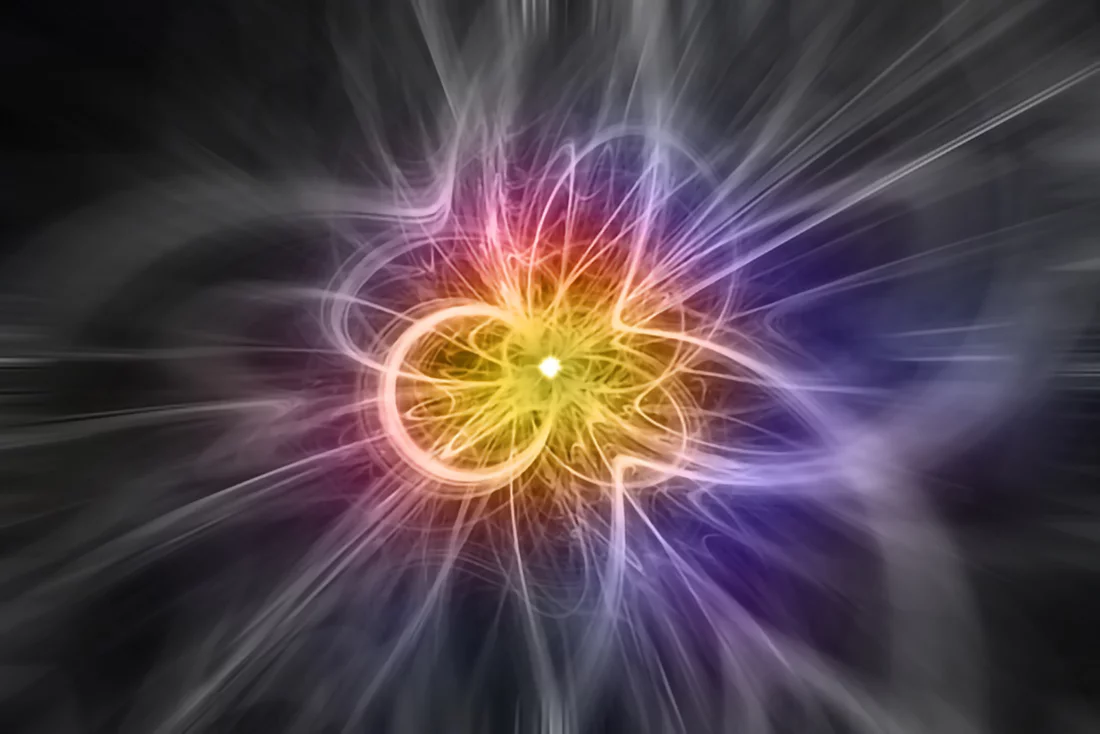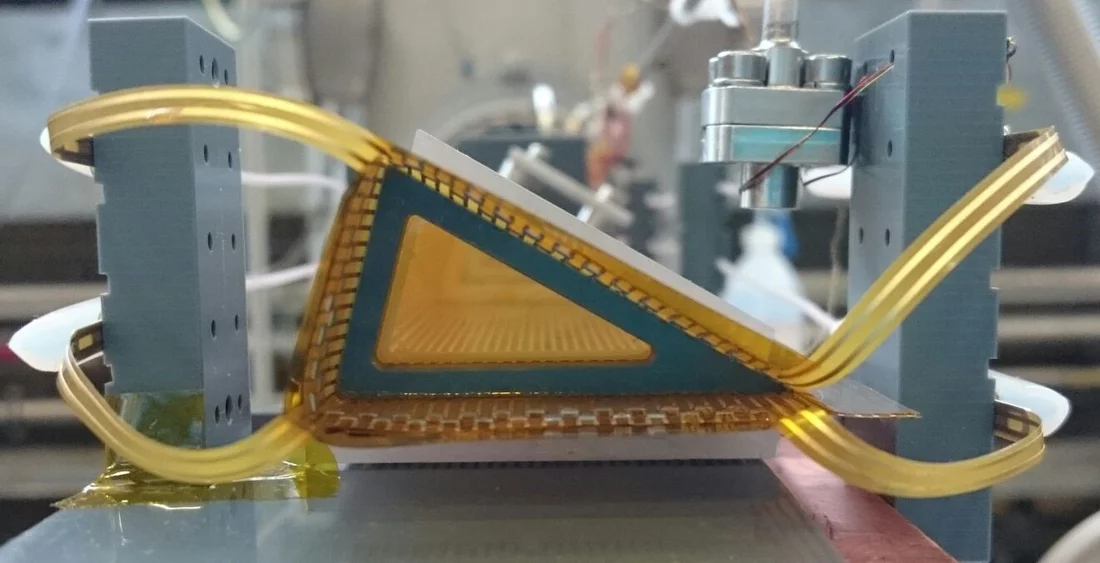Physicists have squeezed elementary particles called muons into a small package. This manipulation will enable further study of muons and muonium, and advance their use as subatomic probes for novel materials.
The muon is like a heavy electron, created in the lab by colliding protons and nuclei. Muons are interesting to study in their own right, and they can also be used to investigate the magnetic properties of materials. “Each muon is like a little magnet,” explains Klaus Kirch, head of the Laboratory for Particle Physics at the Paul Scherrer Institute (PSI). “If you place a muon within a material, you can see how much it spins in response to its surroundings and thus probe the material’s magnetic properties.” This could pinpoint compounds with valuable properties, such as superconductors.
A positive muon with an electron creates muonium, which resembles antimatter hydrogen, and can further fundamental research. “This enables us to do improved spectroscopy of their energy levels or measure their gravitational acceleration,” Kirch adds, “and test general relativity and the Standard Model of particle physics.”
To be useful, muons must be controlled. But when they are generated, they fan out in a wide beam, like torchlight. One way to reduce the spread is to cool the muons, but this must be done in 2.2 µs (microseconds, or millionths of a second) before they decay. Cooling at high velocity requires big, expensive facilities; cooling at low velocity is possible on smaller scales, but many muons vanish. “However, the cooling efficiency may be much better at low velocities, potentially compensating for the losses,” says Aldo Antognini, Kirch’s colleague at ETH Zurich and PSI.
Quality over quantity
Antognini, Kirch and the international muCool collaboration have devised a way to squeeze the width of a muon beam from 14 mm to 0.25 mm. The experimental parameters were predicted by researcher Ivana Belosevic, winning her the PSI prize for best PhD thesis.
Using the High Intensity Proton Accelerator at PSI, the method involves firing muons into a tank of cold helium, surrounded by a magnetic field and special arrangement of electric fields. The gas, at around –263 °C, slows the muons almost to a stop, then the electric fields nudge them along. As the particles gain speed, the magnetic field can bend their trajectory.
Collisions with helium atoms cause muons to lose energy, which reduces the effect of the magnetic field. To control the number of collisions, the top of the tank is about 13 °C warmer than the bottom and the muons are directed towards the middle of the resulting density gradient. This carefully crafted combination of forces pushes the muons into a narrow beam towards a target less than 1-mm wide. The process lasts 3.5 µs, by which time 80% of the muons have decayed.
Creating this narrow beam is the first of three planned steps. The stream of muons is then sent into a second tank, described previously by the muCool team, which reduces its length from 20 cm to 1 mm. No more than 1% of muons remain at this stage, but this is still plenty. “While we do lose some intensity, the muon losses are overcompensated for by the much improved beam quality,” says Antognini.
The final challenge is to direct the short, narrow muon beam through a 1-mm hole and into a vacuum to be accelerated onwards, towards new experiments and new horizons for particle physics.
Reference: Antognini, A. et al. Demonstration of muon-beam transverse phase-space compression. Phys. Rev. Lett. 125, 164802 (2020).
Read full article: here


